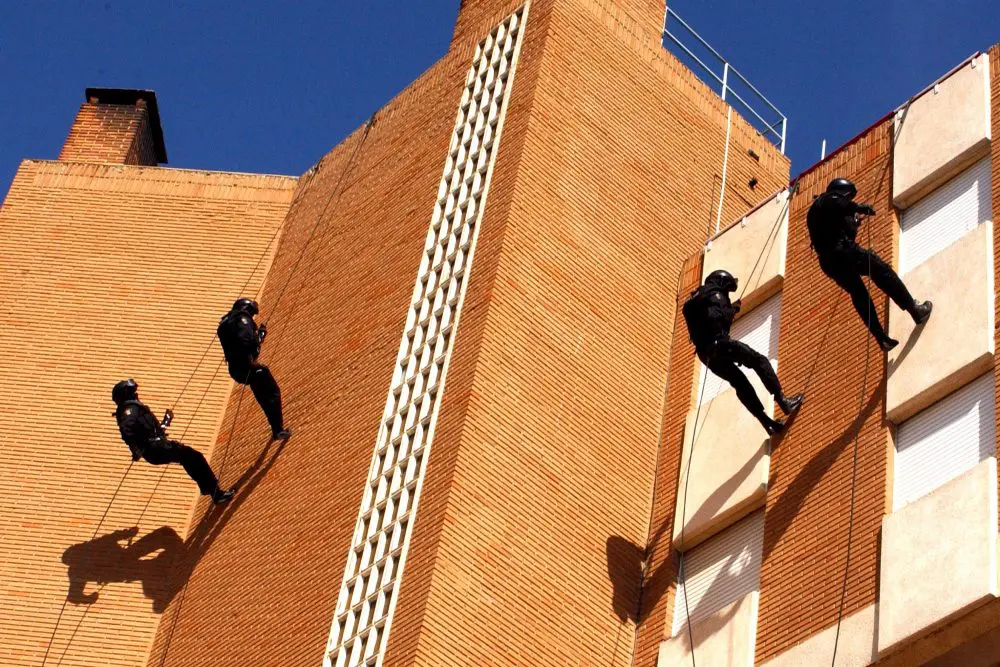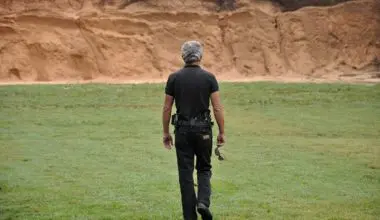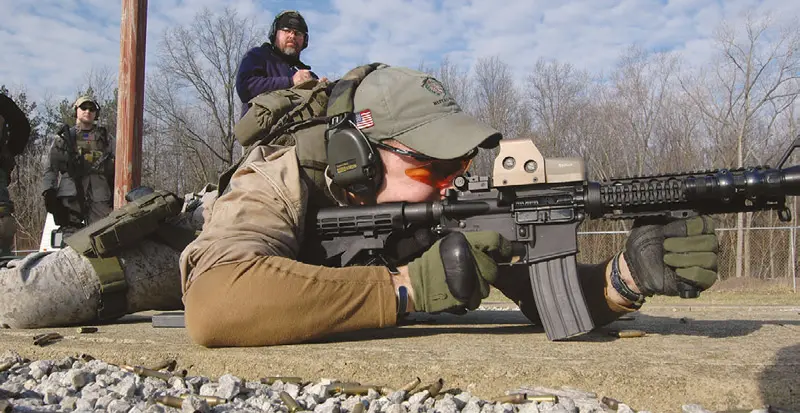
Prone is the most stable firing position. The closer we are to the ground, the more of our body is in contact with the ground.
So far, so good—but there are problems.
Legions of shooters get their body flat on that deck, but then brace on their elbows, bringing the rifle sooooo high up that they might as well be kneeling.
One factor is that many appear to be afraid of getting too close to the ground. This may be steeped in the tradition of formal marksmanship training, when it was “illegal” to allow the rifle to get too close to the ground. To that end, a properly looped and slung shooter (to enhance the marksmanship portion of the equation) would have his arms directly under the gun, with no portion of the weapon/magazine touching Dear Mother Earth—and therefore providing artificial support.
This has carried on to high-power rifle competition, which has turned into a mega game (and a great game) of equipment, but having no connection to fighting.
Prone is a very stable position, but only if you are low to the ground. Having body armor, magazines on your chest, or the big curse of American society—a food blister—can make it difficult to get into a viable prone position.
Another consideration is speed: How rapidly can you assume a stable firing position and engage a threat? A perfect position that takes a long time to enter may be as useless as no position at all. Conversely, a rapidly assumed position that is unstable is also useless.
Another factor commonly encountered is that those who do this for a living are normally wearing armor as well as chest-mounted magazines. What works great standing may not work well in conventional “legal” prone.
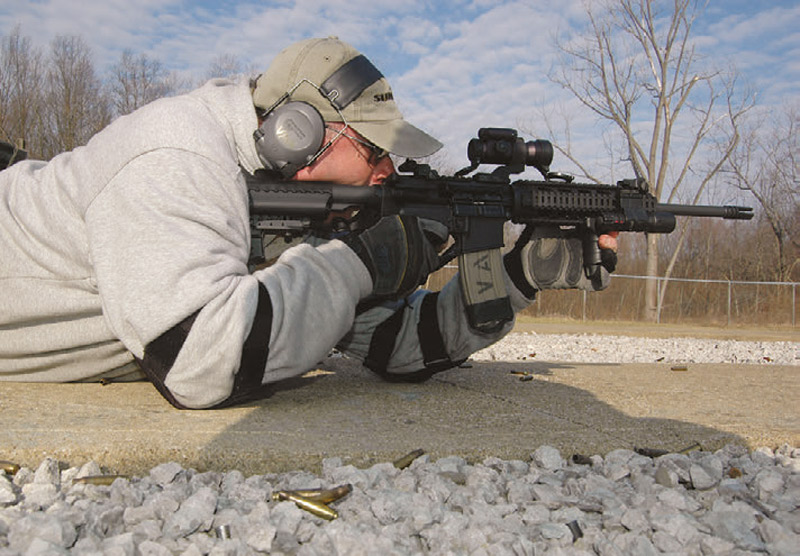
Table of Contents
CONVENTIONAL PRONE
The conventional prone position was entered in a stylized manner. As the shooter dropped to kneeling, the shooting hand went to the toe of the stock, which made contact with the deck as the shooter got to kneeling. As he flattened out, he rolled slightly on to the support side, moved the stock into his shoulder, and rolled flat onto the deck.
His support-side elbow was directly under the gun. The magazine was not permitted to touch the deck, which, as everyone knew, would cause the Earth to spin off its rotational axis and the nations to convert to socialism.
Conventional prone works well if you have the benefits of time and distance, a conventionally stocked gun, a parade sling that can also be used as a loop sling and, well, you get the idea. Fifteen years ago, this was the “A” answer.
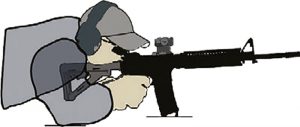
GOING PRONE IN THE 21st CENTURY
Those in the business now wear armor, run a shorter gun that uses a tactical sling, and are generally more astute—and efficient—with their weapons.
While the current trigger puller can get down in a manner similar to his Dad and Granddad, it may not be the most efficient way. Getting down now requires a slightly different track. Going down to an intermediate position (think kneeling) can be similar, but he now maintains a master grip on the carbine and runs the gun with a tactical sling.
He may break his fall with his support-side hand, but eventually he will wind up flat on the deck—and herein lies the problem.
The best type of prone gets your body close to the deck—the closer the better. The carbine needs to be on the deck as well. However, the armor and magazines on your chest may preclude that, and the result may be a high position that will not be as stable as if you were closer to the deck.
Trying to get behind the gun and get low at the same time is an exercise in futility. You can’t get really low and you can’t get really stable.

TIME TO THINK OUTSIDE THE BOX?
Instead of compromising for a less viable position, why not just get on top of the gun? This is not as silly as it sounds, but a caveat is necessary. Aside from having the right attitude, this technique works best with a red dot sight (RDS). It works less well with iron sights or telescopes.
Understand that in a standing position, a shorter length of pull (LOP) is beneficial. But in prone, you may need a longer LOP. If you have the dual luxuries of time and distance, you can extend the stock a few notches. But when distances are close, the clock is moving in overdrive.
A common error for many is they fail to maintain control of the gun. They get into prone and then relax. When they press the trigger, the gun will bounce. Not too bad if they’re only firing a single shot against a circular paper bad guy, but problematic on the two-way range.
If the buttstock is not against your body, the rifle will rock, and subsequent shots may be anyplace but where you want them to be. In conventional prone, you can pull the rifle back into your shoulder with both hands and use the magazine as a monopod. But you’re at close range, time is critical, and you’re wearing armor. You can’t get the magazine on the ground and still get behind the gun.
What you can do—and do efficiently—is get on top of the gun. Consider that the buttstock will not be in your shoulder or on it. Instead, the buttstock will be under you, and your strongside arm will be over the stock/receiver extension. You will be up very close to the RDS. Your head may not be erect, but may in fact be tilted.
The reticle of the RDS may not be centered within the optic, but that is not a problem, especially at the distances of engagement. Where the dot is, is where the projectile will go (all other things considered).
If you have accomplished all of this, are in strong contact with the gun, and can control the trigger properly, you can deliver rapid, accurate shots into your intended recipient.
My fellow E.A.G. trainers and I flashed on this particular technique during a training exercise in the late 1990s. It worked, but circumstances put it on the back burner.

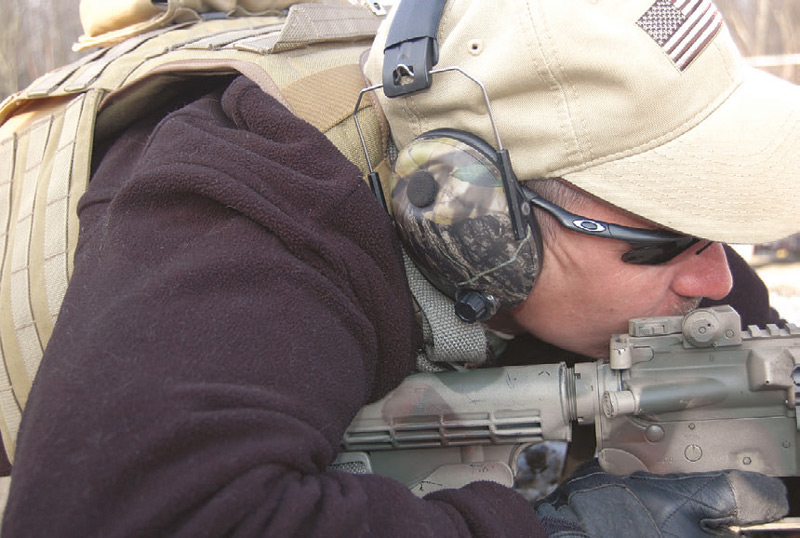
TRYING IT OUT
Awhile back, I attended a Trident Concepts Carbine Operators Course. As part of the testing, we shot a Modified Navy Qual Course. This drill is shot at 50 yards, and the student shoots five rounds standing, speed reload, five rounds kneeling, speed reload, and five rounds prone, with a par time of 25 seconds.
When I executed the drill, I fumbled the second reload. I knew I was running short on time, and when I went to prone, I wound up with what I thought was a bad prone position.
Like fumbling the pistol during the drawstroke, I had no choice but to suck it up and do the best I could. I was lying on top of the gun and my head was cocked down and to the side to see through the Aimpoint M4. I locked up and cranked off what amounted to a five-shot burst (it wasn’t actually a burst, just five rounds as fast as I could properly press the trigger).
Considering everything I screwed up, I was rewarded with a group smaller than it should have been. This was much better than I had anticipated, and I figured we should start working this a little more.


ATTITUDE ADJUSTMENT
The only negative issue we can find with this technique is the griping from the whine and cheese crowd, those poor souls afraid to try anything that takes them out of their comfort zone.
When you train for this, cleanse your mind of the old way of doing it and fall down right on top of the carbine. The stock should be underneath you, between the side of your chest and your bicep. The weight of your body is on the gun. The magazine is planted in the deck, and both hands are controlling the gun.
Your armor, load carriage gear, body configuration, and type of weapon will all determine how you acquire your sight. You may be behind it or above it, but you will be in very close proximity to it. As stated above, this TTP is less efficient with iron sights or a telescope, but an RDS will work fine.
Once you have a sight picture, work the trigger rapidly, straight to the rear. You’ll find that with some practice, you can rip off five shots quickly and score solid hits.
This is an alternative position, and it may or may not work for everyone every time. However, it can be extraordinarily efficient for those who may need it on the two-way range. It’s a position that can be rapidly assumed and offers great stability as well as the ability to deliver rapid, accurate shots into those people attempting to kill you.
The only way to find out if it works is to actually do it, and that may require more than one attempt before pronouncing success or failure.


